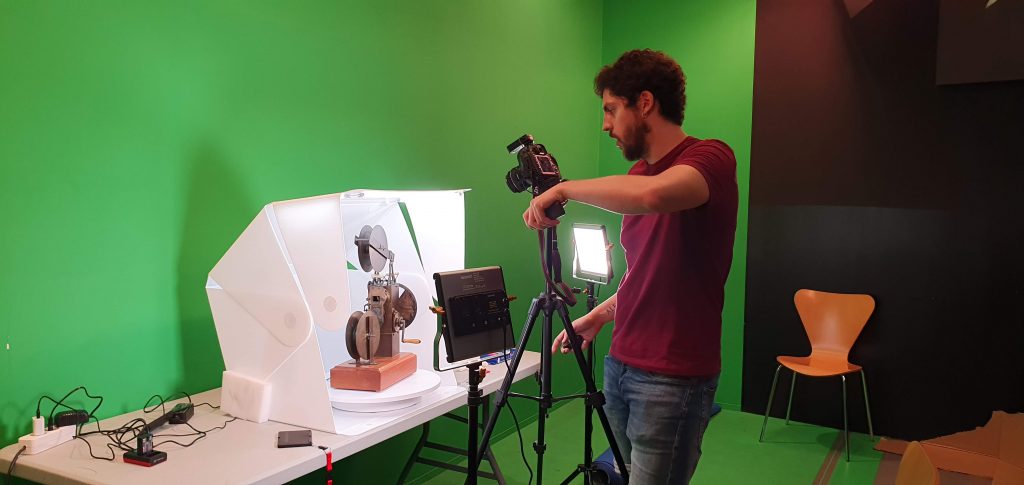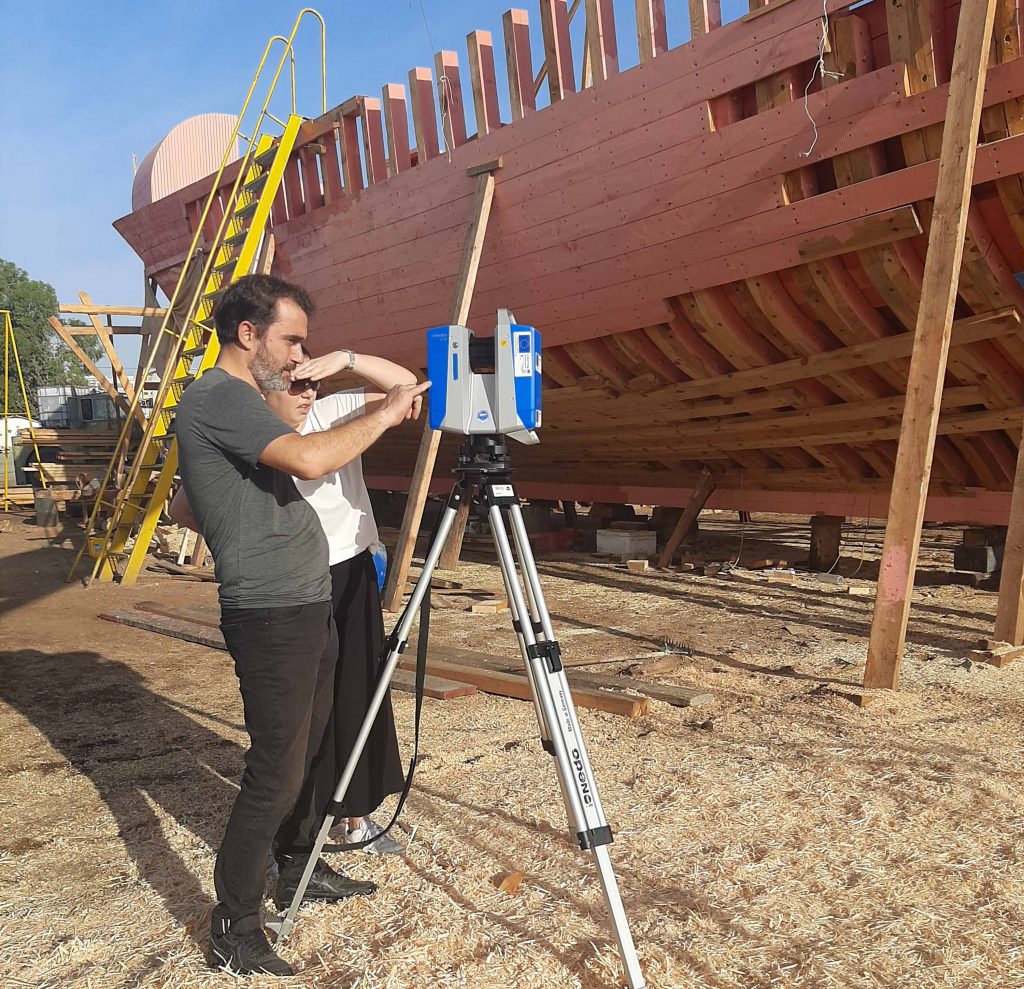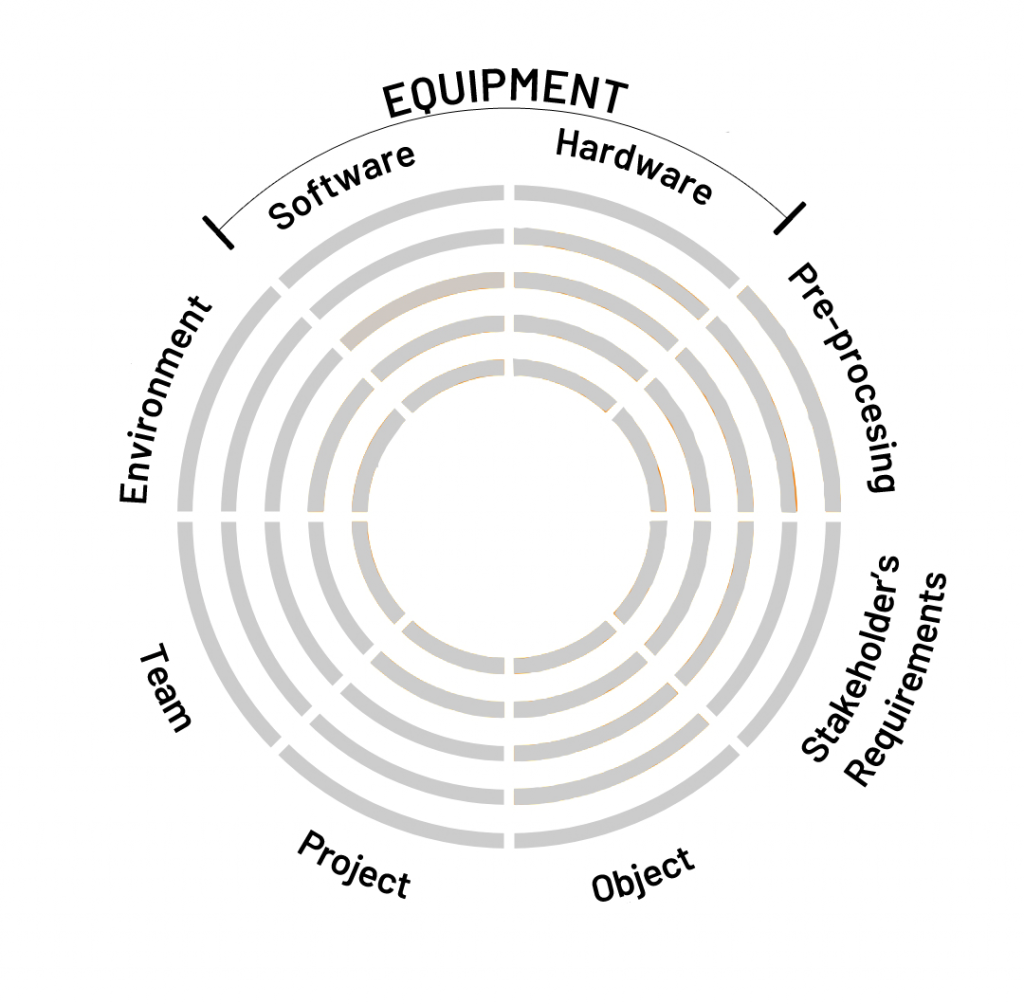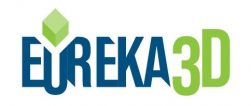


Introduction
This guide is designed to help anyone on their 3D digitisation journey. It is specifically aimed at Cultural Heritage professionals who are considering, or in the middle of, digitising their cultural heritage collections using three dimensional models. It outlines and simplifies the recommended standards highlighted in the EU VIGIE Study 2020/654 (Study on quality in 3D digitisation of tangible cultural heritage, published April 2022) and written in response to the EU recommendation (EU 2021/1970 on a common European data space for cultural heritage, published November 2021) for Member States to digitise all moments and sites at risk in 3D by 2030. This guide has been created within the framework of EUreka3D an EU project co-funded by the European Union (grant no. 101100685).
Why digitise in 3D?
Every object is unique and carries a significant value in the story of humankind. 3D digitisation is a valuable tool in recording an object’s memory for posterity. It is important to capture this professionally, correctly and as thoroughly as possible to avoid losing the narrative for the benefit of future generations. To meet the needs for the protection, long‑term preservation and the maximum number of end users, it is highly recommended to digitise at the highest quality available, which includes recording as much information (MetaData, ParaData) and Data (Geometrical Data), as possible. This will increase the usefulness of your efforts and support the monitoring and digital preservation of your content.
User Scenarios and Stakeholders
Data Acquisition for tangible cultural heritage assets, either movable and immovable, comes with different degrees of complexity, depending on the user scenario and context. For example, user scenarios involving small artefacts in controlled environments are very different to the complexity of scenarios that involve underwater wrecks or objects in caves. Each scenario requires analysis and careful planning in advance to assess the level of complexity. This allows a project manager to prepare for the foreseeable challenges and more accurately complete a project within unavoidable constraints (e.g. budget, time, personnel/professionals, resources, equipment and infrastructure to be used, scope of reuse for the models, etc.).
This guide can help with three basic contexts:
- Museum Managers who want to digitise part or entire collections in controlled conditions;
- Public Administrations / Monument and/or Site owners willing to digitise immovable large objects;
- Stakeholders, who have decided to digitise an entire site.
Movable Cultural Heritage – Movable heritage ranges from photographs and paintings to metals, ceramics, glass, wood, leather, textiles, and other composites. It can be two or three‑dimensional, made of one or multiple materials and consist of a single layer or multiple layers.
Immovable Cultural Heritage – Immovable heritage consists of buildings, land, and other historically valuable items, typically with fixed foundations connected to the terrain. In addition to castles, houses, mansions, and towers, it also includes churches, monasteries, rectories, townhouses and palaces, rural folk architecture, technical and industrial monuments, theatres, museums, plague columns and shrines, among other objects. This category also includes caves and underwater CH such as shipwrecks, underwater ruins and buildings, which hold structurally complex architectural objects, structures and historically‑rich movable interior furnishings.
A Note on Quality
Quality is not simply measured by the output resolution and accuracy of 3D models. Equally important is the completeness of the data records that relate to the object and the digitisation process. At its simplest an object can be transferred by a single individual into a 3D model using a mobile phone which can be published online, all in a matter of hours. However, the potential of protection, preservation and reuse for these basic models, either for research or promotional purposes is very limited. In contrast, the highest level of complexities will need coordinated teams of experts, capturing a number of different aspects, using specialist high definition capture systems, in environments which can either change over time or suspend any form of digitisation for any given period. This implies higher investments but offers a result that is truly reusable by different communities of stakeholders (researchers, architects, engineers, creative industry, tourists, educators, general public…) and that grants a long-term preservation of the 3D model.
Regardless of how easy or complex a 3D digitisation project might be, it is of high importance to always strive for the highest level of quality of 3D digitisation in the cultural heritage sector to produce a result which is not limited to geometry and textures, but which embeds and recovers the memory of an object. This includes the interconnected stories, and
knowledge that are associated with a tangible object. For example, the origins of the materials and/or its production technology may tell another story in the life of the object. Additional knowledge, therefore, needs to be recorded in the ParaData and MetaData that is associated with the FileData that is generated in the digitisation project.
- FileData: relates to the set of files that compose the 3D model.
- MetaData: relates to the descriptive information associated to the cultural heritage object represented in the 3D model.
- ParaData: relates to the information that describe the digitisation process and context applied to create the 3D model, which also grants to perform quality controls on the model itself. It also includes technical metadata that is automatically captured by software
A Note on Complexity
The VIGIE Study helps you assess and measure the complexity of your Data Acquisition project. Some of the complexity metrics outlined in the Study will be obvious to you, others may not be. By understanding the complexity, you will be better placed to plan and deliver your project on time and within an expected budget. Complexity estimates will help you identify the correct team, the optimum equipment and more effectively record the full story of your objects/site, both visually in 3D and with the associated data that gives meaning to your digitisation. Without having a full understanding of the complexity involved with your project, you are likely to discover that your 3D models are not fit for purpose and only serve as a visual reference, at best. A prior understanding of complexity also allows you to make informed decisions about what you may, or may not, be able to do within the scope of the project or re‑assess the scale of your Data Acquisition e.g. quality vs. quantity.

On the left, the Radial Chart proposed in the VIGIE Study methodology for the assessment of the complexity for a digitisation project. More details and specifications for the different sections of the Radial Charts are provided in the Stidy and explained in the Guidelines
3D digitisation: Steps to success
This guide directly references the full VIGIE 2020/654 Study On Quality In 3d Digitisation Of Tangible Cultural Heritage, commissioned by the EC, which identified all relevant elements for successful 3D digitisation of cultural heritage, classifying them by degree of complexity and purpose or use. The study also looked at what determines the quality of a 3D digitisation project and made an inventory of existing formats, standards, guidelines and methodologies used by the industry. The VIGIE Study templates two main project plans:
- Immovable objects (Immovable Cultural Heritage, according to UNESCO see page 46 of the VIGIE2020/654 Study). – fig 1.2a
- Movable objects (Movable Cultural Heritage, see section 3.5 page 44 of the VIGIE2020/654 Study). – fig. 1.2b
Each template is divided into the same 4 areas:
- Project Planning
- Documentation and Site Work
- Production and Delivery
- Archive & Preserve
The main point of difference for immovable objects (Monuments, Groups of Buildings, Sites) is that the VIGIE2020/654 Study classifies them as a “site”. Site based work increases the complexity and additional considerations are required. A completed project plan forms the framework of the ParaData of the digitisation process.
The Digitisation Guidelines help you navigate in the relevant parts of the VIGIE Study and accompany you in understanding the framework and complexity of your digitization project.
Checklist: 3D digitisation step by step
These are the main questions you should be able to answer for a 3D digitisation project. Devise a Project plan and measure levels of Complexity in‑line with the following steps based on the methodology of the VIGIE 2020/654 Study:
Project Planning
- Identify what are you digitising? Why it is important?
- What are the Stakeholder requirements. Expectations, Deliverables and Deadlines.
- Identify and build your team – Internal staff? External contractors? Level of Expertise?
- Solve legal issues and other barriers to the success of your project. E.g. Site access, Contracts and legal issues, Permits, IPR and Copyright.
- Create a detailed project description with objectives and development timeframes with input from your Stakeholders/Client.
- Conduct a site visit and object assessment – measuring potential weather and environmental complexity and challenges that might need to be remedied, where possible.
- Estimate the Complexity of your digitisation objects/site using the proposed Radial Charts. Reassess timeframes, team, expertise, cost as a result.
- Agree recording methods (equipment) that is both suitable for your project and to the agreed level of accuracy/resolution required by you Stakeholders.
- Confirm Data Capture Solutions – Data Conventions
- Consider the data storage required during digital acquisition and post processing, including the back‑ups to ensure integrity during this high‑risk phase. As well as sustainability (storage/online) costs of maintaining the 3D models produced in your project.
Documentation and site work
- Record detailed ParaData during the digital acquisition. Re‑input exact values of any parameter measure previously estimated. Plus, any other information to describe the digitisation process.
- Record MetaData (the descriptive details of the object itself – include preservation metadata)
- Assess/validate accuracy resolution and error of the Raw FileData output in comparison to the Stakeholder requirements and the intended use before signing off.
Production and Delivery
- Process your Raw FileData into a workable 3D model. Remember you are likely to need a full resolution 3D Model and associated files stored offline for delivery to professionals, on request. Plus, an optimised 3D model that is flexible to display on a wide range of platforms (3D viewers/visualisers).
Archive and preserve
- Create a Back‑up of all your finalised Data. Remember to acquire consent if storing personal data.
- Assign Rights Labelling to your 3D Models according to the permissions of relevant Stakeholders.
- Publish your 3D models by including all MetaData and ParaData.
- Disseminate your project to your target Stakeholders.
Publication and dissemination
A note about use and reuse of 3D cultural heritage objects
3D digital objects provide more detail, scale and possibilities for in depth interaction than 2D equivalents. This has various impacts, but most of all 3D experiences can provide more immersive ways of exploring cultural heritage content and engaging visits to cultural sites and institutions.
3D objects are useful resources in learning, education and research, in exploring, preserving and monitoring heritage sites and monuments and in helping reconstruct heritage. 3D models of museum objects, monuments and sites can be reused in Virtual Reality (VR) and Mixed /Extended Reality (MR, XR) or Metaverse experiences, such as virtual tours or remote training, and in Augmented Reality (AR) applications for education, tourism and city/ museum tours. In addition, from the 3D models it is possible to produce printed models (rapid prototyping), useful for children engagement, artefact handling and teaching, sensory and accessibility experiences to be offered to impaired visitors, and other creative reuses leveraging 3D printing. Last but not least, another important domain that highly benefits from 3D digitisation is research. This is especially relevant for heritage sites, monuments and objects which are deemed at risk. 3D digitisation allows for detailed analysis and monitoring of monuments and sites and of cultural heritage objects, either indoor, outdoor or underwater, including measuring, observing fine details not readily visible to the naked eye or in simple 2D recording, comparing the details of related objects of similar type, monitoring the impact of specific factors on objects over time (such as wind, pollution, erosion, visitor traffic). Finally, the 3D scanning of objects is crucial in the fight against illicit trafficking of cultural goods: the presence of 3D models in the databases of stolen works used by the police and customs forces allows for a gain in speed and efficiency in the in‑situ identification of these objects.
The various stakeholders and categories of re‑users for the 3D models may have different needs and requirements; yet the very starting point to enable use and reuse of the 3D models is discoverability. Next to publishing and disseminating the 3D collection on Institution’s website, pan‑european platforms like Europeana, the Data Space for Cultural Heritage, the upcoming European Collaborative Cloud for Cultural Heritage, and e‑infrastructures and repositories dedicated to the various research communities offer opportunities to share and link datasets about 3D cultural heritage to a wider audience.
Publishing a 3D object online: technical challenges
Quite often, processing of 3D data online is done on the client side, so the actual device used by the user plays a key role and must be considered when designing 3D experiences, which are affected by network limitations, computer memory or processing capacity. The 3D industry has greatly evolved over the years but still lacks the standardisation level that 2D content has. This lack of standards for the use of 3D data makes it a challenge to decide on a universal 3D format. There is no complete alignment between the 3D software to process 3D data and the software to visualise or deliver 3D experiences to users. Herein, some content providers may use a format for the archival of 3D data, but this may not be the best choice for visualisation or delivery to end users. For example, OBJ is a widely known format, commonly accepted by 3D software and 3D visualisation libraries, but it is less space‑efficient for data, making it a poor choice if the data to be sent over a network are too large. Such cases can benefit from a binary format such as PLY. Some algorithms and 3D formats focus on compression ratio, while others focus on performance. It is usually a trade‑off: compression makes more efficient use of space (benefiting, for example, the storage or transfer of a file) but increases processing effort (both for compressing and decompressing the data). These are not intrinsic problems for 3D, as 2D content also suffers from them, but they are more prominent in 3D because 3D is more complex in nature, and 3D content requires extensively larger amounts of space than 2D content, which affects its storage, processing and transfer over a network. It is therefore recommended to consider the creation of the 3D model in different versions and formats, so to accommodate different users requirements (e.g. professional users may need a higher resolution model available for download and offline fruiting of raw data, while for dissemination purposes a compressed version shared with an embeddable viewer could be sufficient for the user to enjoy the content.
A note about rights labelling
3D objects can generate a complex scenario about the rights to be attached to the model once it is published. In general terms, in order to support the largest use and reuse of the 3D models, it is recommended that an open access approach is considered. Especially when the 3D model is a faithful representation of a real‑world object, it is not expected that additional rights are imposed (which means that if the object is in the Public Domain, its digital representation be it in 2D or 3D should be as well Public Domain).
Yet, there may be constraints which prevent this approach to be taken, such as national legislations, contractual agreements, or the methods used to create the model. For example, many collection holders do not have expertise or equipment to perform 3D digitisation in‑house and thus the task is often outsourced to service providers that are contracted to perform the scanning and generate the models. Also, depending on the methods employed to model the 3D object, the object can be the result of the work of various people, and, in case a creative method is used, the artist’s intellectual property. This may also mean that the same physical object may have different 3D reproductions with different features, which may bear different rights (for example, a faithful digitisation of archaeological ruins vs. their virtual reconstruction creatively recolored). It is therefore of the utmost importance to clear the rights in the contract or service agreement with the service provider, in order to allow the content holder to retain the maximum freedom in sharing the model with a reuse license.

